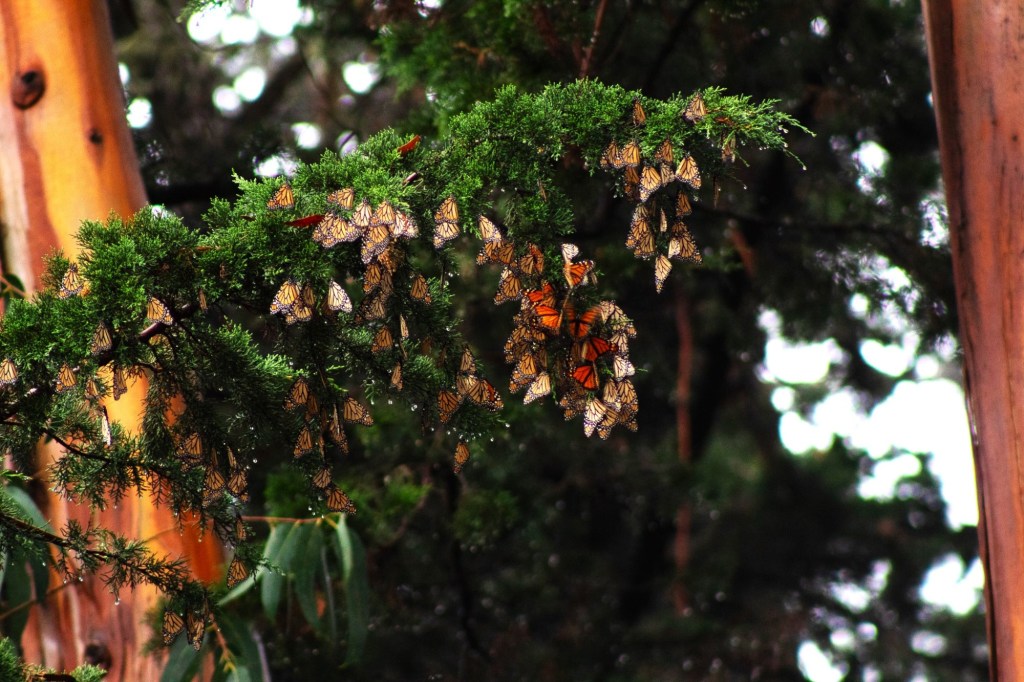After two consecutive years of increases, the population of Western monarch butterflies wintering along the California coast dropped by 30% in late 2023, according to numbers released on Tuesday, Jan. 30.
Spotters from the Portland-based Xerces Society for Invertebrate Conservation counted 233,394 of the iconic orange and black beauties at 256 sites in coastal California over three weeks in November and December 2023, finding about 102,000 fewer butterflies than the previous year.
The Western Monarch species (Danaus plexippus) of North America has made a miraculous recovery since 2020 when only 2,000 were counted. But the biologists note that they are still at just 5% of their population numbers from the 1980s when the counts found monarchs in the low millions in California.
“We can see the population is trending downward. In the 1980s we saw numbers in the low millions,” Isis Howard, a monarch conservation biologist familiar with the count, said on Tuesday, Jan. 30 in a webinar.
What caused the drop in numbers this past year?
Fluctuations in populations are common for this species, especially when numbers are already low. Survival rates can be affected by changes in rainfall, temperature, and the availability of plants containing nectar — a source of food — and of milkweed plants on which they lay their eggs, explained scientists with the Xerces Society.
Winter storms cut into breeding season in the spring when observers initially saw fewer butterflies. So finding fewer wintering butterflies was not a surprise, explained Emma Pelton, a monarch conservation biologist with the Xerces Society.
“It’s difficult to predict how conditions during any single year will influence the population, but we do know that Western Monarch numbers need to be much higher before we consider this a recovery,” Pelton said.
In fact, Pelton reported, “the bottom fell out” of the population starting in 2018 and reached the lowest number in the count’s…
Read the full article here







